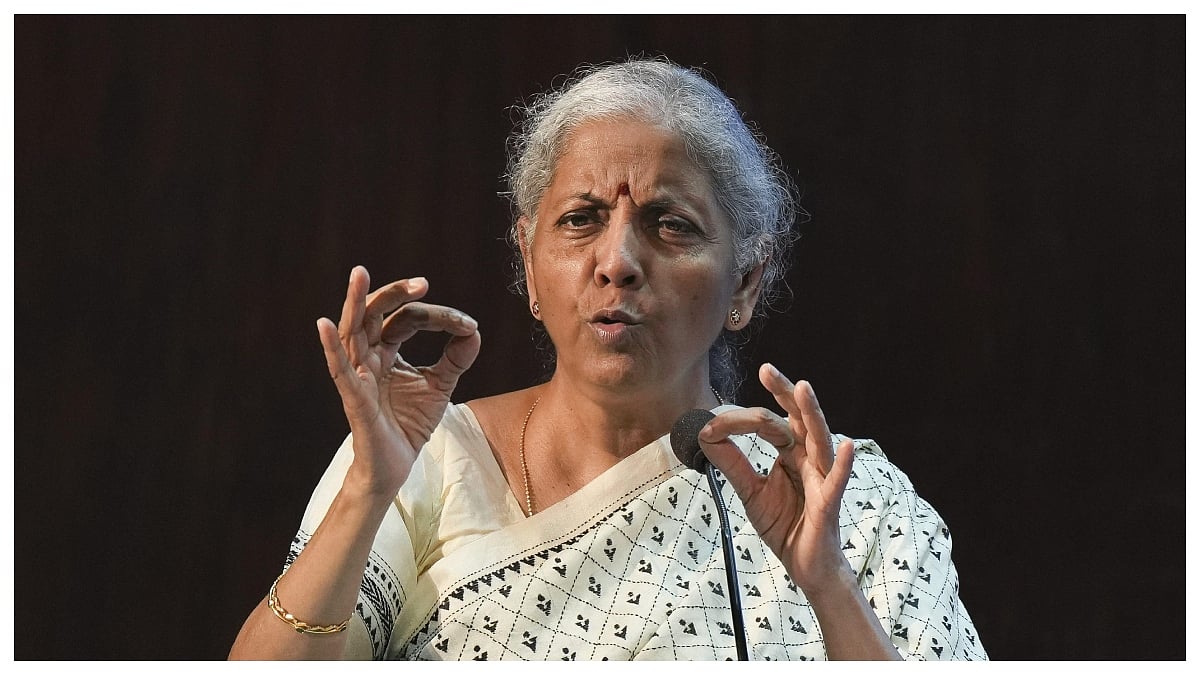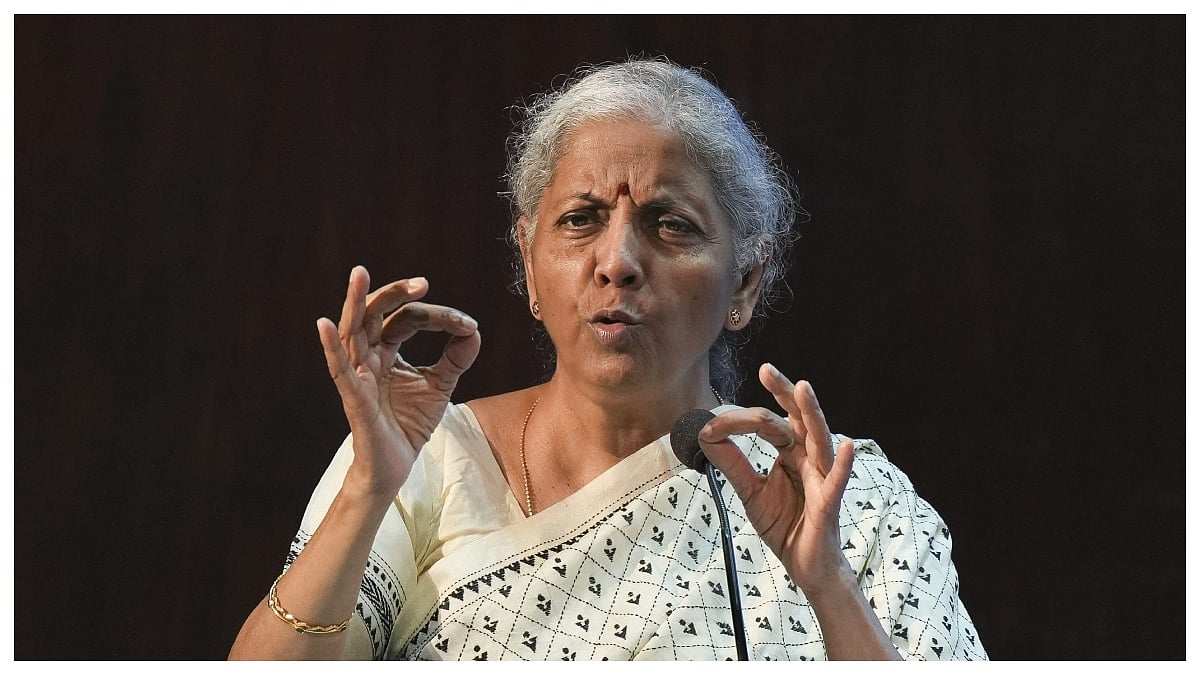New Delhi: Emphasising the need for broader pension coverage among the informal and self-employed segments, Finance Minister Nirmala Sitharaman on Wednesday urged the Department of Financial Services (DFS) and the Pension Fund Regulatory and Development Authority (PFRDA) to explore the possibility of training women as ‘Pension Sakhis’ to deepen social security coverage.
Speaking about the future of pensions, the Finance Minister highlighted the importance of expanding coverage to the informal, self-employed, and platform or gig workforce. She suggested simplifying the onboarding process, offering local language interfaces, and enabling doorstep e-KYC to make enrolment quick and easy.
“There is a need to deepen women’s pension security through workplace auto-enrolment, contribution continuity during maternity and caregiving breaks, and micro auto-debits, which will keep small, regular savings from lapsing,” Sitharaman said on the occasion of NPS Diwas.
She further added, “I want the DFS and PFRDA to explore the possibility of training women as ‘Pension Sakhis’ and incentivise them for sustained increase in enrolment, much like ‘Bima Sakhis’ done by LIC.”
The Minister also stressed promoting financial literacy early in schools, ITIs, colleges, and community centres, so households begin their contributions in their 20s and just before their 30s.
“The National Pension System (NPS) should turn into a true ‘Jan Andolan’ (people’s movement),” she said.
Sitharaman emphasized that the focus must be on keeping costs low and improving service quality, with time-bound, digital-by-default grievance redressal mechanisms, clear disclosures, and seamless portability across products and platforms.
“Keeping the system fiscally sustainable by aligning contributions, prudent asset allocation, and inflation-aware benefits is essential so pensions remain reliable across economic cycles,” she added.
Observing that the growth of any nation depends on the robustness of the social security framework, she noted that innovative pension and retirement solutions will help address the demands from both industry and consumers.
Pointing out the performance of schemes under the NPS, she said the average annual returns since inception have been attractive — over 13% for equity schemes, and 9% for the Corporate Debt and Government Securities schemes.
“NPS is one of the lowest-cost pension fund management schemes in the world, and lower costs mean more money stays invested and grows,” the minister remarked.
### Forum for Regulatory Coordination and Pension Product Development
In the Budget 2025-26, the government announced the establishment of a forum for regulatory coordination and development of pension products.
Accordingly, Sitharaman said that in August 2025, “We have set up the ‘Forum for Regulatory Coordination and Development of Pension Products,’ which brings together PFRDA, EPFO, IRDAI, SEBI, and relevant ministries.”
The primary aim of the forum is to develop a common regulatory and supervisory framework, set investment standards across pension products, strengthen consumer protection and grievance redressal, and ensure robust systemic risk management of assets under management.
### Multiple Scheme Framework (MSF) to Be Effective October 1
The Finance Minister announced that the Multiple Scheme Framework (MSF) will come into effect on October 1. Under this framework, non-government NPS subscribers will be able to allocate up to 100% of their funds in equities.
Each scheme will have moderate and high-risk variants, with equity exposure permitted up to 100%, compared to the current maximum of 75% in high-risk options.
Subscribers will be able to choose new schemes under the MSF without needing to invest in the “common schemes,” which are the old schemes of various pension funds. Additionally, non-government subscribers can opt for multiple schemes across different Central Recordkeeping Agencies (CRAs) under a single Permanent Retirement Account Number (PRAN).
“This will cater to different investor preferences, giving them greater flexibility,” she said.
The cost structure will remain low, capped at 0.3% of assets under management (AUM) annually, with an additional 0.1% incentive for pension funds that bring in new subscribers. For subscribers, the MSF represents a major expansion of choice and personalisation.
### Government Officials Highlight Pension Sector Potential and Challenges
Speaking at the event, Financial Services Secretary M Nagaraju noted that India’s investment in pension plans continues to be low, with more inflows going into other savings instruments.
“The government has created adequate room for the pension sector to grow,” he said. “Now, we need to look at ways to direct more inflows towards pension savings.”
He highlighted the dual tax benefits in the current financial year — income tax relief announced in the Budget 2025-26 and recent sweeping Goods and Services Tax (GST) reforms.
Prime Minister Narendra Modi had earlier stated that these reforms are expected to result in savings of over Rs 2.50 lakh crore annually.
“These reforms will help deepen the pension sector,” Nagaraju said, adding that higher disposable income will translate into more savings, which can be directed towards pension plans.
Chief Economic Adviser V Anantha Nageswaran, also present at the event, mentioned that the government is making all efforts, including structural reforms like GST rate rationalisation, to boost the domestic economy amid external pressures.
“The government’s reforms are directed at boosting savings in the economy,” he stated.
### Current Pension Assets and Future Directions
According to data from the NPS Trust, total assets under management under the National Pension System stood at Rs 15.48 lakh crore as of August 31.
Nagaraju acknowledged ongoing efforts to popularise pension plans and improve their penetration in the economy but noted challenges persist, particularly regarding prudent pension fund management.
He urged fund managers and PFRDA to launch newer, more bespoke products to accommodate the evolving needs of the sector.
“NPS also needs to expand its reach by adding subscribers from the informal and non-government sectors,” he added.
—
*Disclaimer: This story is from a syndicated feed. Only the headline has been changed.*
https://www.freepressjournal.in/business/financial-services-department-pfrda-should-train-women-as-pension-sakhis-finance-minister-nirmala-sitharaman



